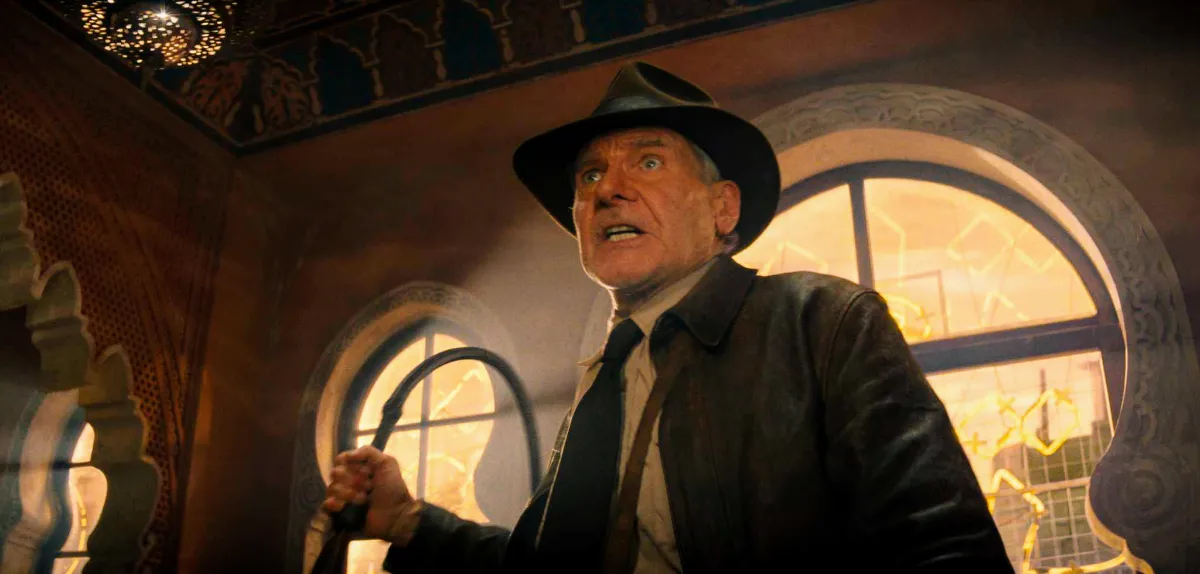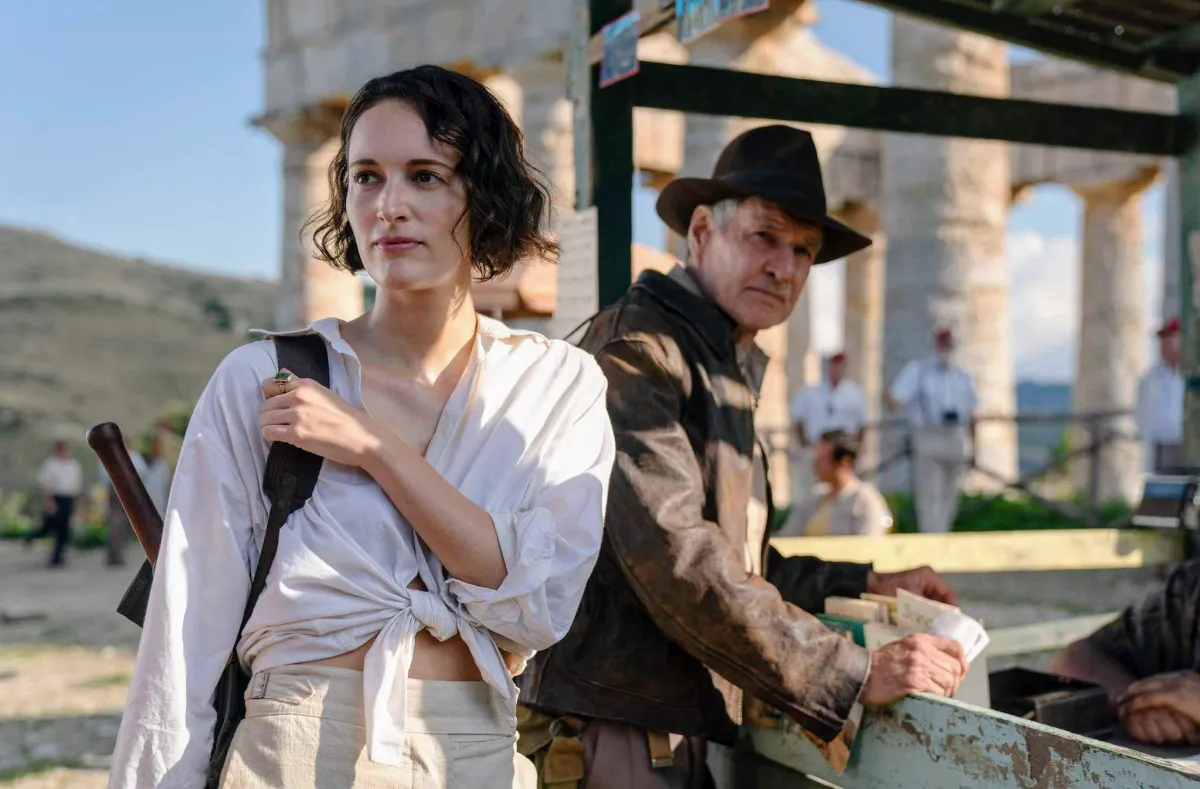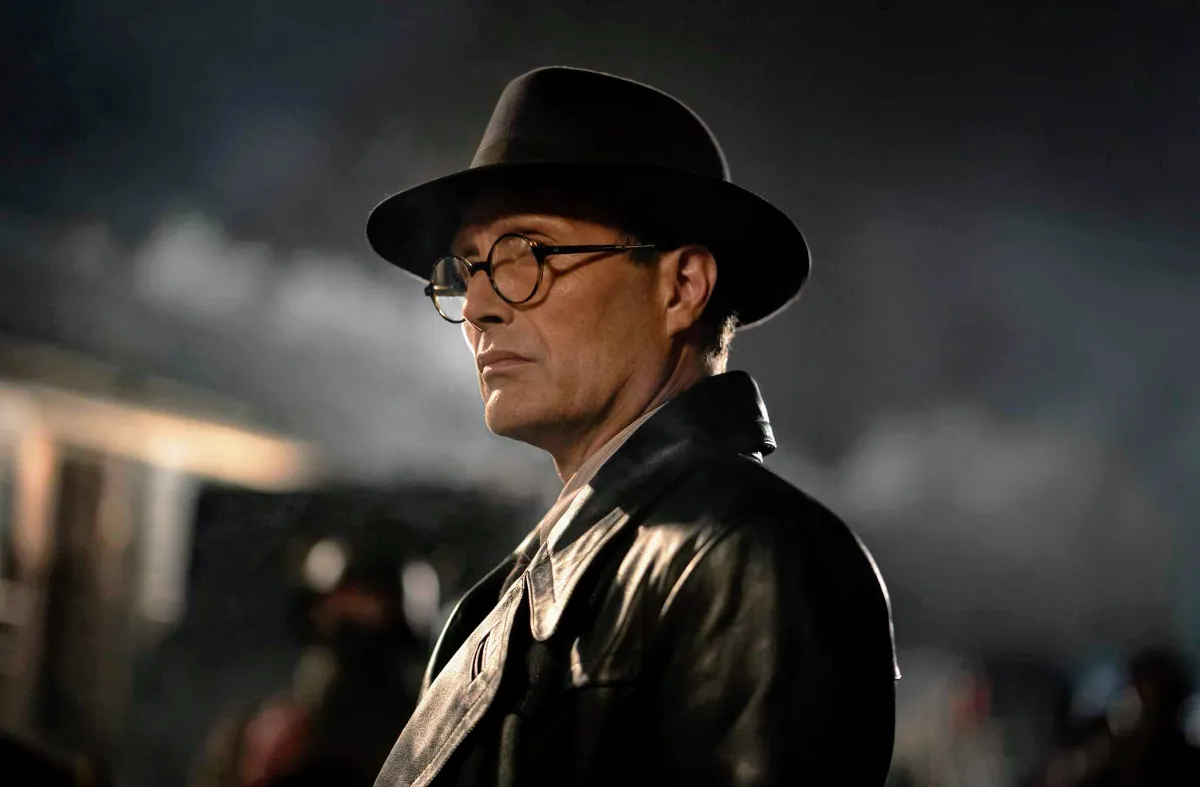*Indiana Jones and the Dial of Destiny* marks the end of an era.

If what you’re after is an Indiana Jones adventure, *Indiana Jones and the Dial of Destiny* delivers. Even if you’re unsure whether you want another installment, this fifth—and reportedly final—chapter won’t leave you disappointed. It’s a solid action-thriller: opening with a bang, cruising in the middle, and finishing on an even bigger high.
Compared to the average action flick, it’s a thrill ride, and its appeal extends well beyond the action. At 80, Harrison Ford returns as the iconic archaeologist, and thanks to some jaw-dropping visual effects, we see him in the opening act de-aged by four decades. It's Ford's current performance, but his face and voice echo the Indiana of the 1980s.
The film kicks off with a high-energy sequence set during World War II, as Indy faces off against Nazis trying to seize the mystical Dial of Destiny. It’s a scene that could have been directed by Spielberg himself—except it wasn’t. James Mangold steps in as director, and his work so closely captures Spielberg’s spirit and cinematic rhythm that it’s easy to mistake this for the real thing.
From there, the story jumps to 1969, where an aging Indiana now resides in New York City, looking more worn than time alone would explain. The decades have clearly taken a toll. Ford has never been a warm-and-fuzzy screen presence, but there’s something unexpectedly poignant in seeing him here—older, quieter, but still unmistakably Indy. We’ve traveled far with this character, and now we’re watching him approach the final stretch.

Indiana Jones is now separated from his wife (Karen Allen) and has grown even gruffer with age, working as an archaeology professor who goes through the motions while teaching uninterested students. Then one day, Helena (Phoebe Waller-Bridge), the daughter of an old friend, appears, hoping to recruit him for a quest to find the Dial of Destiny — an obsession that consumed her late father.
“Why chase something that drove your father mad?” Indy asks. But it quickly becomes clear that everyone is after the dial, especially Dr. Voller (Mads Mikkelsen), a former Nazi turned rocket scientist. Much of the action revolves around characters obtaining, losing, and fighting over the dial as they try to either find it or keep it safe.
However, there’s a flaw: while Indiana Jones is the main focus, he shows the least urgency in actually possessing the dial. Unlike the others, who have plans for it, Indy’s goal is simply to prevent it from falling into the wrong hands—which doesn’t create much dramatic tension.
About an hour into the movie, a realization sets in: this couldn’t have been directed by Spielberg. If it were, the film would have made it clear why it’s so critical that the villain never gains control of the dial, likely emphasizing the catastrophic consequences. Spielberg would also have leaned into the emotional weight of Indiana’s age and the fact that this is the final chapter, fully exploring the bittersweet farewell.

“Dial of Destiny” may not be a masterpiece, but it’s still a whole lot of fun — even when compared to some of the earlier Indiana Jones films. Sure, it doesn’t come close to the heights of “Raiders of the Lost Ark” (1981) or “The Last Crusade” (1988), but it definitely outshines “Kingdom of the Crystal Skull” (2008) and might even edge out “Temple of Doom” (1984) in some fans’ eyes.
With the series now complete, it’s fair to say that Indiana Jones remains one of cinema’s most reliably entertaining franchises. Unlike “Rocky,” “Death Wish,” “Fast and Furious,” or “Star Wars,” which have all had their share of disappointing entries, Indy’s adventures have largely maintained their quality. And we’re still waiting for a truly great “Pirates of the Caribbean” movie.
The worst criticism you can throw at Indiana Jones might be that he once survived an atomic blast by hiding inside a lead-lined refrigerator — and even that moment was oddly thrilling.
So, savor this one while you can, because it’s the last we’ll get.
